Each year, thanks to the generous support of one of our musical alumnus benefactors, we send the in-coming student assistant conductor of the University 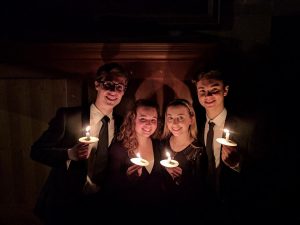 Chamber Choir on a course, ahead of facing the choir for the first time in October. This year, second year French and Business Administration student Matt Cooke (pictured, far right) found himself travelling to Keele University for the week-long Foundation Course run by Sing for Pleasure. Here, Matt reflects on how he got on, the real use for mirrors and folk-dancing…
Chamber Choir on a course, ahead of facing the choir for the first time in October. This year, second year French and Business Administration student Matt Cooke (pictured, far right) found himself travelling to Keele University for the week-long Foundation Course run by Sing for Pleasure. Here, Matt reflects on how he got on, the real use for mirrors and folk-dancing…
Back in May, having shown an interest in become the new student conductor for the University Chamber Choir, I was asked to audition. Facing a choir with which I have sung and which I’ve respected so much over the past year was probably one of the toughest things I’ve had to do; describing it as walking into Lord Alan Sugar’s boardroom would be an understatement! Regardless, I was pleased with how the audition went and consequently overjoyed to find out that I would be taking on the role. I couldn’t wait to start choosing repertoire and to attend the Conductors course itself.
Two weeks before I was due to attend the Sing for Pleasure summer school, a pack of music arrived at home containing the four pieces of music that I would have to prepare for the week’s course. I’ll be honest, looking at these scores I was a bit confused as to why the pieces were so simple. A musical round of 4 bars hardly seemed a challenge compared to Rachmaninoff’s Bogoroditsye Dyevo, which I’ve chosen to tackle this autumn with the choir. Nevertheless, I recorded the chosen pieces into Garageband and proceeded to ‘study’ them in the lead up to the course.
I had spent a week prior to the course performing up at the Edinburgh Fringe; arriving at Keele University for the start, it was safe to say I was exhausted, but regardless I couldn’t wait to get started. The 7am start was daunting enough, but after the huge buffet breakfast followed by a strong black coffee, everything didn’t seem so bad! After breakfast we had a vocal warm-up, which every participant on each of the different courses attended. Each warm-up session focused on different warm-up techniques to engage different choirs in different situations. This was followed by a one-hour choral session taught by the tutors. We looked at a Mass written by Ariel Ramirez, called Misa Criolla. It was a challenging piece of music in its own right, but not only did we have two days to learn and perform it, it was written in Latin-American Spanish, which surprisingly didn’t come naturally to many of the choir!
Following the Choral session, we had the first technique session, where all of the foundation conductors came together to focus on the basic gestures and patterns. Firstly, we started on the correct hand position. ‘This can’t be too difficult’, was a phrase that was shortly shot out of my head the minute we started! After what seemed like an eternity of extreme concentration and focussed practise, we began our individual workshops where we split into two smaller groups (picture left) and began work on our prepared pieces. As mentioned above, the pieces didn’t seem particularly challenging, but I soon realised that even the simplest of pieces were a challenge when it came to practising the correct hand gestures and techniques learnt from the previous session.
 What really made these sessions so helpful and rewarding was supporting our other class mates during their section of conducting. It was particularly useful to identify common errors, and how to fix them. It was soon found to my surprise that I talk and waffle too much and move too dramatically for music that doesn’t need such gestures. Who’d have thought it! Our tutor Ruth showed us a technique to combat this. I had to stand up against the wall whilst conducting. This kept my back and shoulders against the wall, supporting a good posture, meaning that my beat pattern was the focus of the singers, rather than an over-expressive shoulder.
What really made these sessions so helpful and rewarding was supporting our other class mates during their section of conducting. It was particularly useful to identify common errors, and how to fix them. It was soon found to my surprise that I talk and waffle too much and move too dramatically for music that doesn’t need such gestures. Who’d have thought it! Our tutor Ruth showed us a technique to combat this. I had to stand up against the wall whilst conducting. This kept my back and shoulders against the wall, supporting a good posture, meaning that my beat pattern was the focus of the singers, rather than an over-expressive shoulder.
After a freshly prepared lunch, we moved onto what was perhaps the highlight of my week. We were asked to sing for the Intermediate 2 level conductors, where they were conducting a new arrangement of some Barbershop classics. Having never sung Barbershop before it was great to find out how much I enjoyed it. The session flew by, and before dinner we had an hour of personal preparation and practise. The week has shown me that a mirror is not just for spending hours doing one’s hair, but also to repeatedly go over gestures and beat patterns for practise! The evening’s entertainment was folk-dancing. Admittedly folk dancing isn’t my strong point, but after a couple of drinks, and a disregard of my dignity, we all had a great laugh and what a fantastic ice-breaker that was!
Day two was much the same, with a vocal warm-up followed by choral and technique session. We focused on 2,3 and 4-beat patterns and looking at how to start pieces which begin on an upbeat, on the bounce-anacrusis and single anacrusis, and how to use them in each time-signature. Following another brilliant Barbershop session and practise session in the mirror, we had Monday night’s entertainment, the first of two informal concerts, where anyone could offer to perform something if they wish.
Tuesday, was a repeat of Monday, with the addition of the formal concert. Wednesday, was a particularly good day with the afternoon off to practise and perhaps a little nap. The evening was taken up by the dress-up, sing-along version of the Sound of Music. It was great fun to see the weird and wonderful costumes that people had made, a particular highlight being the group who had dressed up as the mountains…
Thursday bought with it again more choral sessions this time lead by the advanced conductors. They introduced two more pieces, Vivaldi’s Beatus Vir and Emmanuel d’Astorga’s Stabat Mater, which were to be performed on the Saturday evening. Watching the skills and professionalism of the advanced conductors was a great motivation to see what we could be like in years to come. However, back in reality, we had chosen our pieces to perform in our foundation concert, I had chosen My Bonnie Lies Over the Ocean but the other songs conducted by the others included the Welsh traditional All Through the Night and American Traditional Strike the Bell. After this we had bigger things to prepare such as the performance of the Barbershop chorus, which with huge over the top reactions and moments of comic singing, went down a treat for the watching audience with laughter throughout.
 Friday was The Big Day for the foundation conductors. For the majority of us we’d conduct a choir for the first time in a concert setting (pictured above). Further rehearsals throughout the day, settled our nerves and we were all very excited to get on stage and perform. I’m glad and very proud to say that the whole concert was a huge success followed by a very relieved bow at the end of each piece! To follow a successful day, we had the second informal concert of the week. I performed in two acts, one of which was ‘Without Love’ from the musical Hairspray and myself and three other guys performed in Barbershop quartet of the song Shine on Me which was received with great laughs and applause
Friday was The Big Day for the foundation conductors. For the majority of us we’d conduct a choir for the first time in a concert setting (pictured above). Further rehearsals throughout the day, settled our nerves and we were all very excited to get on stage and perform. I’m glad and very proud to say that the whole concert was a huge success followed by a very relieved bow at the end of each piece! To follow a successful day, we had the second informal concert of the week. I performed in two acts, one of which was ‘Without Love’ from the musical Hairspray and myself and three other guys performed in Barbershop quartet of the song Shine on Me which was received with great laughs and applause
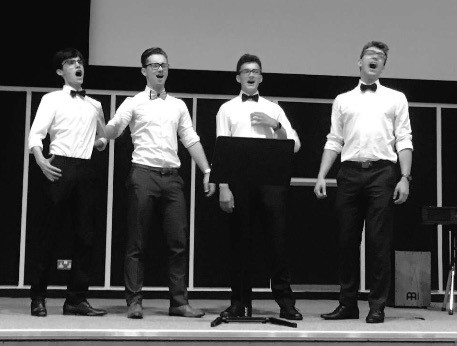 Saturday wasn’t as relaxed as we had hoped as we had last minute rehearsals with the advanced conductors and video feedback from our performances yesterday, where we got to watch our conducting and to reflect on what we had learnt during the week. Reflecting on my performance, I hadn’t quite eradicated the dramatic head and shoulder movements, but applied to the right piece I’m sure it could be quite effective, however for the time being I’ll leave Beethoven’s 9th to the professionals. Saturday evening brought a fantastic performance of the advanced conductors and both pieces of music. It was followed by the awards and then the end-of-course party. I won’t talk too much about the party for several reasons but, ordering over £150 worth of pizza goes to show how big the party was…
Saturday wasn’t as relaxed as we had hoped as we had last minute rehearsals with the advanced conductors and video feedback from our performances yesterday, where we got to watch our conducting and to reflect on what we had learnt during the week. Reflecting on my performance, I hadn’t quite eradicated the dramatic head and shoulder movements, but applied to the right piece I’m sure it could be quite effective, however for the time being I’ll leave Beethoven’s 9th to the professionals. Saturday evening brought a fantastic performance of the advanced conductors and both pieces of music. It was followed by the awards and then the end-of-course party. I won’t talk too much about the party for several reasons but, ordering over £150 worth of pizza goes to show how big the party was…
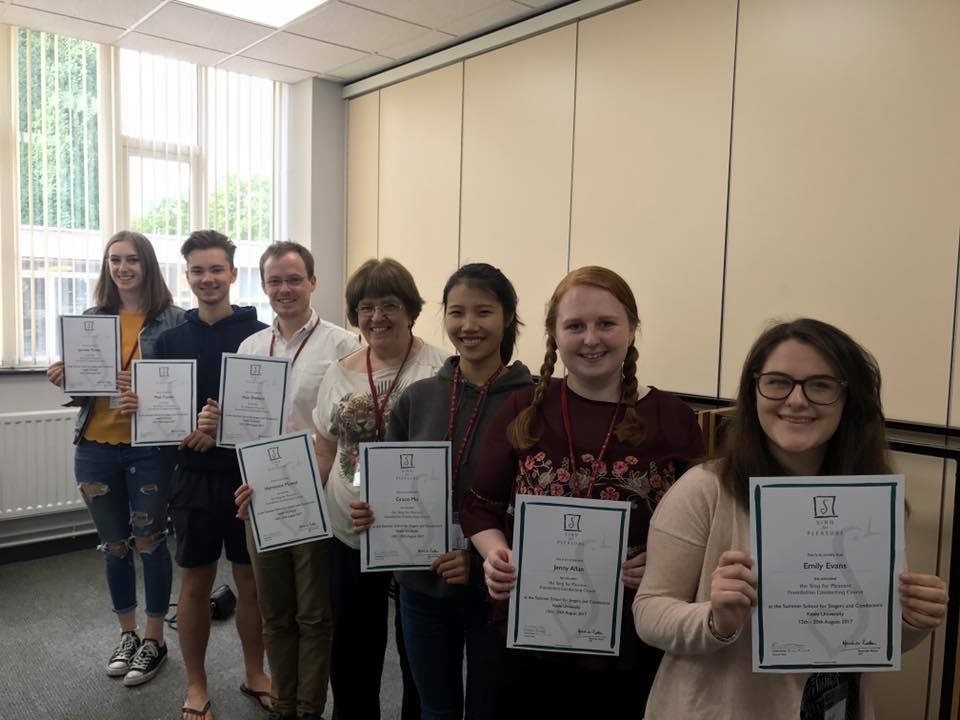 Overall I can’t praise and recommend Sing for Pleasure enough for the thorough and professional attitude that all the tutors have to the teaching and development of every participant. The tutors are fantastic and incredibly willing to teach and help but also friendly, making this week not one to forget. I can’t wait to book onto the next course. The week has taught me so much that will benefit many people for the years to come. I would even go as far to say, that it has inspired me to pursue a career in conducting and music, if I were to continue my training. A huge ‘thank you’ to everyone who made the week a fantastic week and to those who enabled me to attend this course, I am incredibly grateful!
Overall I can’t praise and recommend Sing for Pleasure enough for the thorough and professional attitude that all the tutors have to the teaching and development of every participant. The tutors are fantastic and incredibly willing to teach and help but also friendly, making this week not one to forget. I can’t wait to book onto the next course. The week has taught me so much that will benefit many people for the years to come. I would even go as far to say, that it has inspired me to pursue a career in conducting and music, if I were to continue my training. A huge ‘thank you’ to everyone who made the week a fantastic week and to those who enabled me to attend this course, I am incredibly grateful!


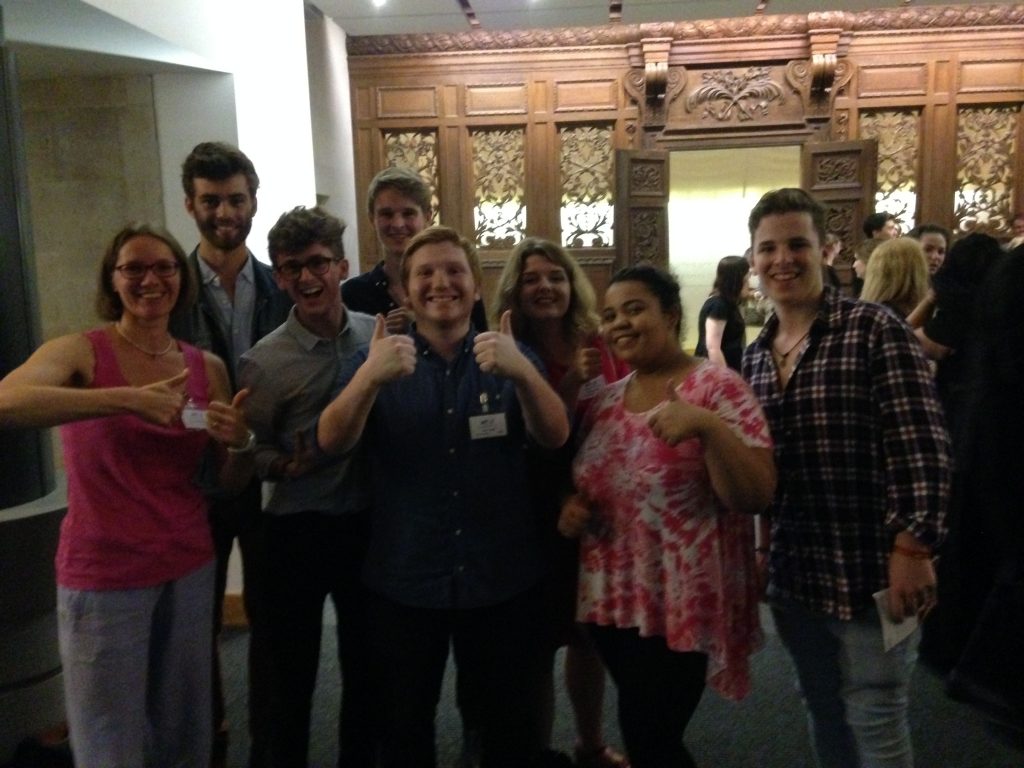
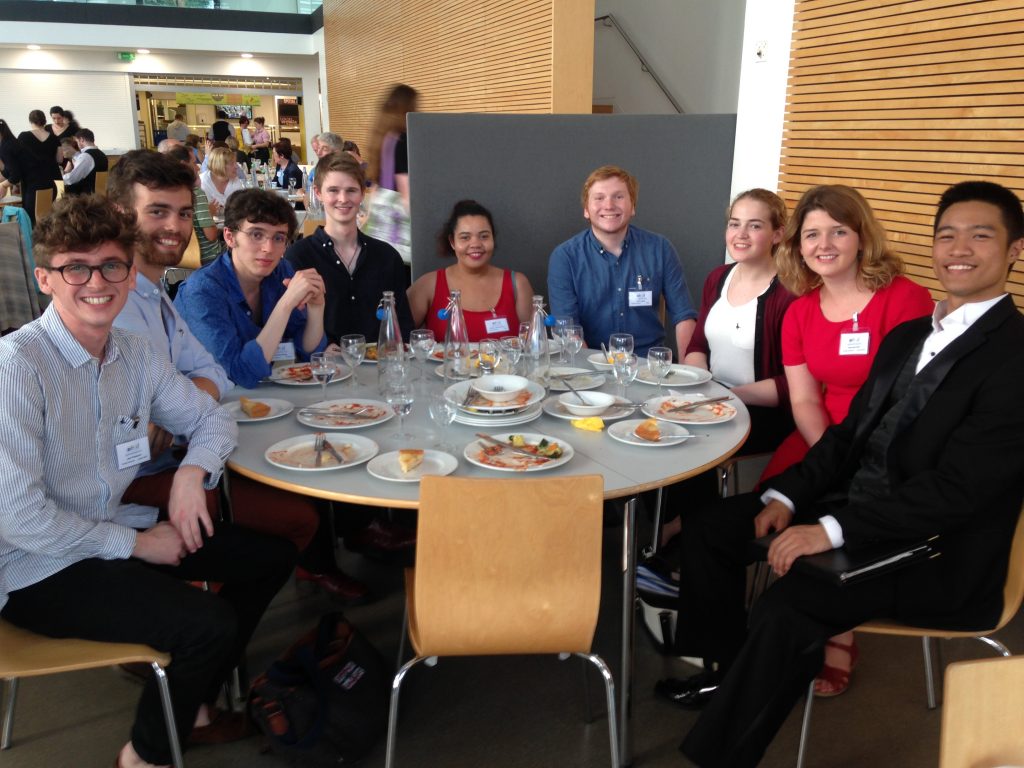
 One of the aspects of singing with an ensemble that less experienced performers can sometimes forget is actually being responsible for making your individual contribution to the ensemble.
One of the aspects of singing with an ensemble that less experienced performers can sometimes forget is actually being responsible for making your individual contribution to the ensemble.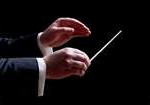 I always find this period exciting and also rather daunting – the opportunity to explore new repertoire, the search for suitable pieces that can be combined to form a cohesive concert programme, and looking at former favourites and wondering if it’s too soon to unearth them again, is fun and interesting, but then comes having to plan the rehearsal schedule, order the chosen pieces, and then seating myself at the piano to learn the pieces.
I always find this period exciting and also rather daunting – the opportunity to explore new repertoire, the search for suitable pieces that can be combined to form a cohesive concert programme, and looking at former favourites and wondering if it’s too soon to unearth them again, is fun and interesting, but then comes having to plan the rehearsal schedule, order the chosen pieces, and then seating myself at the piano to learn the pieces.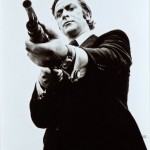 I remember, many years ago, watching the great Michael Caine giving an acting masterclass on television; the topic was how to work with the camera whilst being filmed, and one of the key things he pointed out to the students was to make sure that, when you were moving (in this instance, getting up out of a chair), you took the camera-man with you. Letting the camera-man know that you were going to move by communicating your intent, he said, meant that the chap wielding the monstrously-large film-camera wouldn’t get a hernia through having to follow a sudden movement.
I remember, many years ago, watching the great Michael Caine giving an acting masterclass on television; the topic was how to work with the camera whilst being filmed, and one of the key things he pointed out to the students was to make sure that, when you were moving (in this instance, getting up out of a chair), you took the camera-man with you. Letting the camera-man know that you were going to move by communicating your intent, he said, meant that the chap wielding the monstrously-large film-camera wouldn’t get a hernia through having to follow a sudden movement.